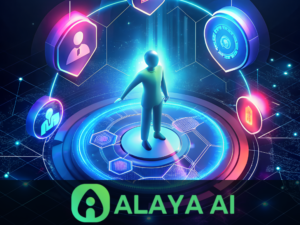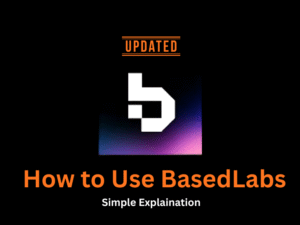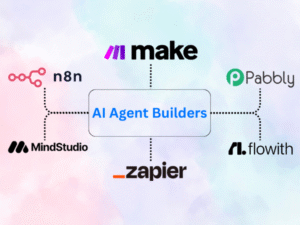Artificial Intelligence (AI) is transforming the way we solve problems, from self-driving cars to voice-activated assistants. However, one method that stands out for its unique approach to learning is Explanation Based Learning in AI (EBL). This technique focuses on understanding the “why” behind actions, making it an interesting and effective form of learning in the world of AI.

In this blog, we’ll dive deep into Explanation Based Learning in AI and how it works, its applications, and its pros and cons. By the end, you’ll have a solid understanding of how EBL plays a vital role in AI systems today.
What is Explanation-Based Learning (EBL)?
At its core, Explanation-Based Learning (EBL) is a type of machine learning where an AI learns from a single example by understanding and explaining it, rather than needing numerous examples. Essentially, instead of just memorizing data, EBL aims to make the system “learn” the underlying principles or reasons behind a successful example.
Imagine teaching someone how to solve a math problem. If you explain why each step is done the way it is, the person can apply this reasoning to other problems of a similar kind. This is the essence of EBL: it tries to grasp the deeper meaning or cause behind a solution, making learning faster and more efficient.

Key Characteristics of Explanation-Based Learning
Now that we have an overview of what Explanation Based Learning in AI is, let’s look at some of its key features that make it different from other types of learning:
- Dependence on Prior Knowledge: EBL relies heavily on the AI system’s pre-existing knowledge to form explanations and generalizations. This knowledge base helps the system understand the example deeply.
Deductive Reasoning: Instead of pattern recognition, EBL uses deductive reasoning, where the system explains why a specific action or result is valid based on its prior knowledge. - Learning from a Single Example: Unlike other learning techniques that require thousands of data points, EBL can learn from one well-understood example by extracting the underlying rules.
Generalization: After the system forms an explanation for a single example, it can generalize that explanation to apply to similar situations, making it a powerful learning method.
Example of Explanation-Based Learning in AI
Let’s illustrate EBL with a simple real-world example from the world of chess. Imagine an AI is learning how to play chess, and it observes a winning move where the player sacrifices a queen to checkmate the opponent in a few moves ultimately.
Instead of just memorizing that sacrificing the queen leads to victory, the AI explains why this strategy works by analyzing how the opponent’s king is left vulnerable after the sacrifice. The AI then generalizes this rule – that sometimes sacrificing a high-value piece can create a checkmate opportunity – and applies it to other situations in future games.
This deeper understanding allows the AI to make smarter decisions without needing to observe thousands of similar moves. It learns why the move is successful, which makes it more adaptable in future gameplay.
Applications of Explanation-Based Learning
Explanation-Based Learning is particularly useful in areas where understanding the “why” behind a decision is crucial. Here are some key applications:
Robotics: In robotics, EBL helps machines understand why certain actions lead to success or failure. For instance, a robot might learn to adjust its movements when carrying a fragile object based on the reasoning that moving too quickly could cause damage.
Medical Diagnosis: EBL can be used in medical systems to diagnose illnesses by understanding why certain symptoms lead to specific diagnoses. Once it learns the reasoning behind a diagnosis, it can apply that knowledge to new cases, improving its ability to make accurate diagnoses.
Game AI: Just like in the chess example, EBL can be applied to video games where AI agents learn strategies by understanding why certain moves lead to success or failure.
Fraud Detection: In banking and finance, EBL can help AI systems understand why certain patterns of behavior might indicate fraud, and then generalize those findings to detect new, previously unseen fraudulent activities.
Customer Support Systems: AI-powered customer service bots can use EBL to provide more personalized responses by understanding why certain solutions work better for certain customer queries.

Advantages of Explanation-Based Learning
Explanation Based Learning in AI offers several advantages that make it appealing for specific types of AI applications:
- Faster Learning with Fewer Examples: Since EBL can learn from a single example, it doesn’t require massive datasets like other machine learning methods. This speeds up the learning process and makes it more efficient in cases where data is scarce.
- Deeper Understanding: By focusing on explanations, EBL systems have a deeper understanding of why something works, which makes them more adaptable to similar situations in the future.
- Enhanced Interpretability: One of the most significant advantages of EBL is that it makes AI decisions more interpretable and explainable. This is particularly important in fields like healthcare or finance, where understanding why the AI made a particular decision is critical.
- Generalization Across Different Tasks: Once an AI has learned the reasoning behind a particular decision or outcome, it can generalize that understanding across various tasks or scenarios, making it highly versatile.
Challenges and Limitations
Like any learning method, EBL also has its challenges and limitations:
- Dependency on Prior Knowledge: EBL heavily relies on the AI’s prior knowledge. If the AI doesn’t have sufficient background information or if its knowledge is inaccurate, it can struggle to form accurate explanations.
- Difficulty in Handling Uncertain or Noisy Data: EBL works best when the data is clear and structured. In cases where data is noisy or uncertain, it becomes difficult for the system to create accurate explanations.
- Limited Flexibility with New Problems: Since EBL depends on reasoning from a prior example, it may not perform well in completely new or unknown environments where the AI has no prior experience to draw from.
- Complexity in Acquiring Explanations: The process of creating accurate explanations for every scenario can be complex and time-consuming, which may limit its scalability in certain applications.
Conclusion
Explanation Based Learning in AI is a powerful and efficient approach to AI learning that focuses on understanding the “why” behind actions. Its ability to learn from a single example and generalize knowledge makes it an ideal solution for AI systems that require reasoning and decision-making capabilities.
However, it’s important to note that EBL is not a one-size-fits-all solution. It has limitations, particularly in handling uncertain data or new, unexplored problems. Despite these challenges, EBL has found its niche in areas like robotics, healthcare, and game AI, where understanding cause-effect relationships is crucial.
FAQ
Traditional machine learning relies on recognizing patterns from large datasets, while EBL focuses on learning from a single example by explaining the underlying principles behind the outcome.
Yes, EBL can be combined with other machine learning techniques to improve decision-making and reasoning in AI systems.
EBL is used in specific domains like robotics, game AI, and healthcare, where reasoning and understanding the “why” behind actions are crucial.
In medical diagnosis, EBL can help AI systems understand why certain symptoms indicate specific diseases, allowing for better, more accurate diagnoses in future cases.
The biggest challenges include reliance on prior knowledge, difficulty handling noisy data, and complexity in generating explanations.
- Main Goal of using context in a prompt
- How AI is Revolutionizing Digital Marketing 2024
- Building AI-Powered Chatbots Without Programming
- King AI Image Generator
- Advantages of Artificial Intelligence Images
- Why is Controlling the Output of Generative AI Systems Important
- How Has Generative AI Affected Security
- DID AI the #1 choice for AI-Generated
- Advantages and Disadvantages of Supervised Learning
- Google Cloud Supported Languages
- Innovative Project Ideas For Students
I’m a passionate AI enthusiast and the founder of AI UPSURGE. With a deep interest in the latest developments in artificial intelligence, I’m dedicated to making AI accessible and understandable for everyone. Through insightful articles, practical guides, and aims to empower readers to harness the power of AI in their daily lives and professional endeavors. When not writing or exploring the latest AI trends.







